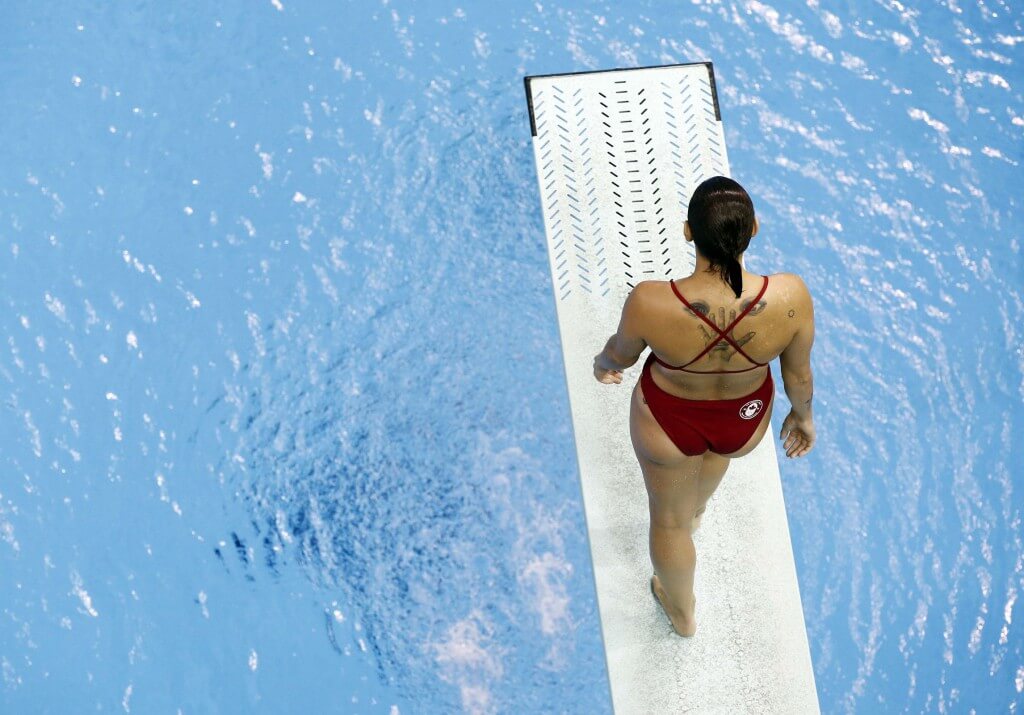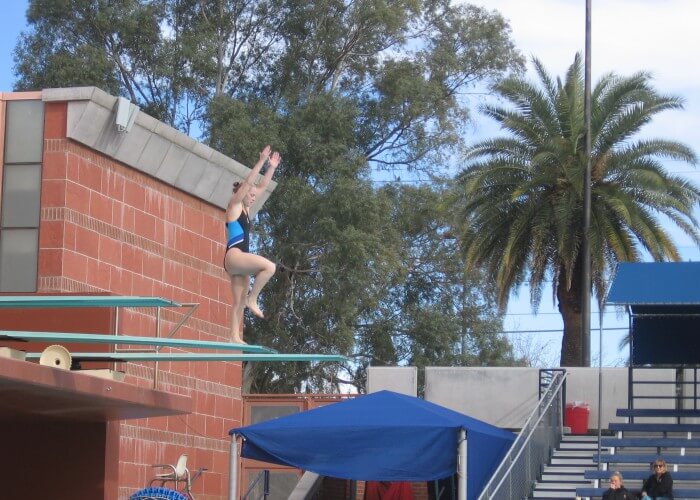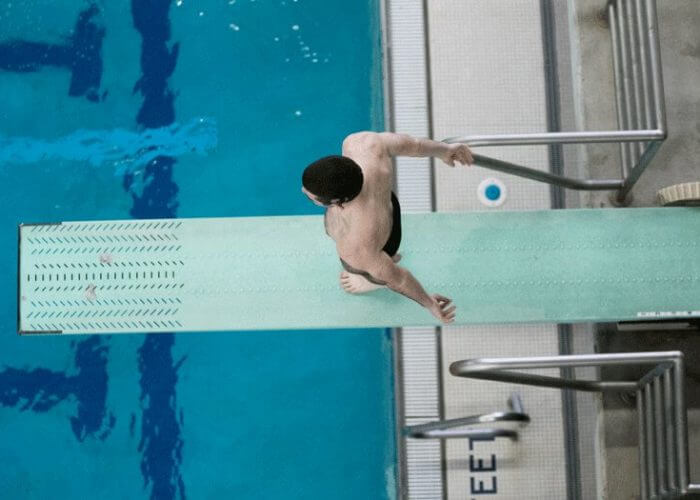Diving Technique: The Art Of the Approach

By Erin Keaveny, Swimming World Contributor.
There are many technical skills divers need to perform a successful dive in the air, when they hit the water, and under the water, but before this can happen the diver needs to jump off the end of the board.
The front approach, or hurdle, can drastically affect a divers height, distance from the board, rotation speed, and power. It is one of the first things that divers learn, and one of the hardest things for a diver to execute.
Even the most experienced divers can improve their hurdles.
There are two main types of springboard diving hurdles: a traditional 5 step hurdle and a hop hurdle. The hop hurdle is usually learned after a traditional hurdle, and requires more control and balance. It is typically recommended for more advanced divers.
In both hurdles, the final steps are the most important. This part of the hurdle directly affects the dive. There is a lot that can be done to further develop this part of the hurdle, which can lead to improvement in all forward approaching dives.
1. Swinging your arms behind you before your knee drive
Holding your arms behind you before the final step of your hurdle, greatly improves balance especially in the hop hurdle, and is a commonly forgotten or untaught technique. It can also help with increasing hurdle power.
A diver’s arms should come back as, or a little before, their foot touches the board for their final step. When done correctly, the diver’s arms will come from behind them, and into the first segment of their arm swing at the same time as their knee drive. The diver’s arms should reach the top of their swing slightly before their knee reaches it’s peak position.
2. Driving your knee

Photo Courtesy: Jeff Commings
When a diver drives their knee, their thigh should be parallel to the board, or above horizontal. The diver’s arms should be held above their head throughout the drive.
Focusing on the knee drive can improve upright posture, and standing up the hurdle. This can also help improve hurdle power, and dive height.
3. Watching the step down on the end of the board
As a diver is coming down from the peak of their hurdle jump, they should watch the board until they almost see their feet land before looking up. This way, a diver can ensure that they are landing at the very end of the board, instead of stepping back too far, or going over the edge.
This is a commonly forgotten technique especially for new divers, but it is an important part of hurdle control.
4. Waiting for the board
Once the diver is at the end of the board, they must “wait for board.” This means that the diver needs to stay with their feet on the end of the board until it begins to move upward again. Doing this allows the diver to take full advantage of the board’s movement, and their hurdle, and helps the diver get a higher and more upward jump.
Rushing off the end of the board is a common mistake, and easiest way a diver can cut off the top of their dive, loosing a lot of height.
Remember, not every hurdle is going to be perfect. Great divers learn how to dive off their bad hurdles too, since there’s no guarantee they won’t have a bad hurdle in a meet. While proper technique can help to improve your diving, even a bad hurdle is a good opportunity.
All commentaries are the opinion of the author and do not necessarily reflect the views of Swimming World Magazine nor its staff. All diving training and instruction should be performed under the supervision of a qualified coach or instructor, and in circumstances that ensure the safety of participants.




